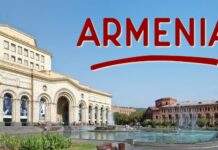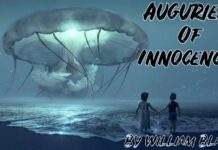A careful and deep analysis of Impersonal And Historical Themes By Dickens in his novel of “A Tale of Two Cities” in which Dickens has dealt with many themes in it. As this novel is a tremendous effort of Dickens in which he presents personal and impersonal themes. It is the success of his art that he interconnects and integrates all the themes skillfully and masterly. Every theme leads to another theme in a systematic way. Dickens chooses sometimes subjective and sometimes objective themes which some of them are obvious and some are hidden. When Dickens wrote this novel, he was upset due to some of his personal worries and problems as his married life and his love affair with the young actress Ellen were not on the right move.
If we throw light on the importance of revolutionary events which make this novel a tragic one then we come to know that these events term this novel as impersonal one. There is no doubt in saying that social justice has always been with man since the existence of human society. As this theme is connected with French Revolution which was begun as a result of those conditions of cruelty and suppression under which the poor and common people in France had been becoming the target. The common and poor people, after being exploited by the rich landlords, were in such miserable conditions that they used to become ready to suck the wine flowing from the cask on the floor in the wine house. It shows an open scene of exploitation which resulted in poverty and hunger in the surroundings of Paris.
In that era, social injustice became the order of the day and the gulf between the rich and the poor became wider and the exploitation of the poor by the rich was on the peak which highlights from the scene in which a poor child was run over by the carriage of a rich and died. Instead of consoling with the bereaved family, the rich scolded the poor people and threw a gold coin towards him. The aristocratic people always behaved the poor people in very callous and selfish manner and regarded them as quite worthless creatures. This resulted in the gaps between the privileged classes and common sects of people.
The prolonged imprisonment of Dr. Manette is an evident example of this injustice. How heart – breaking is Dr. Manette’s document in which he collects the record of the situation during his prison. One other noteworthy thing is that the aristocratic families of Dickens’ time were too much influential and above law that even administrative authorities could take no step of action against them.
There is another very obvious theme in the novel which deals with the violence and bloodshed of the French Revolution. The major cause of this erupting revolution was the atmosphere of injustice which was prevailing in France. With the passage of time, common people acquired limitless power and they became capable of becoming as ruthless and cruel as the privileged classes were in the past. They united a mob. of revolutionaries which went forward and broke all the shackles of injustice and cruelty against themselves. The Bastile had become the symbol of suppression, atrocity and tyranny and when the mob attacked it, all these inhuman rites’: and customs of the titled and rich families were rooted out. The revolutionaries beheaded. the Governor and hanged the influential and above law people.
It is the law of universe and nature that as more people are suppressed, the more they will rise and this very theme is also depicted or presented in this novel. Just in four days and nights, eleven hundred people were slaughtered by the revolutionaries. Those who were arrested, were trialed by Revolutionary Tribunals and were hurriedly sentenced to death.
The horrors of the Revolution play an important role in making this novel as a tragic one. Such kind of revolutionary acts can only be controlled or avoided when the rich and aristocratic class would realize its responsibility to fulfill the rights of the poor and labour class. This novel also gives a very moral lesson to the privileged classes of all the countries that they should feel special sympathies and regard for the common as well as poor people of their countries.
Apart from these above mentioned themes, there are also two more themes of resurrection and renunciation. Dr. Manette is recalled to life when he is released from Bastile and is taken to England by Mr. Lorry and Miss Manette. He is thought to be dead and is like a man who has dug out his grave. Similarly, Charles Darnay is saved from the jaws of death when he is brought out of the death cell in an unconscious condition by Barsad. Sydney Carton who sacrifices his life for the sake of his love, mounts to the scaffold in a very brave and prophet-like manner. Here, he utters some prophetic words of the “Christian Burial Service;” “I am the Resurrection and the life …. …..” Charles Damay leaves all his family estate in France as a protest against the injustices and the wrongs which his family Everemonde had been doing to poor and common people of the country.
He is the only one in the family who shows the humanitarian side of life. He is totally against his family traditions and customs and by leaving his estate of his family, he shows an act of renunciation. Another act of supreme renunciation, is shown by Sydney Carton who happily and willfully sacrifices his life for the sake of his beloved Lucie. By forming the act of self sacrifice, he seems to be just like Christ like a figure and a prophetic one. This is the very act of renunciation which has elevated his status as a saint and has also made him a divine entity.
In addition to these themes, there also occur other themes of prison and imprisonment. In “A Tale of Two Cities”, everybody is in some kind of prison e.g. Dr. Manette spent eighteen years in prison Darnay too literally spent fifteen months in prison. Luice is also imprisoned metaphorically because she is always likely to be succumbed between mighty opposites. Sydney’s act of self – sacrifice releases him from his prison of his psychological feelings. As it is rightly acknowledged that this novel is a blend of reality and fantasy. Some scenes actually seem to be the matter of fantasy and others are really closer to the reality of life.
So, we see that the blend of reality, and fantasy always runs through all Dickens’ works without violating reality. Though Dickens gives a colour of fantasy to everything in the novel yet the basic fact of the whole novel is the French Revolution itself. By showing the horrible and dreadful aspects and scenes of revolution, he gives a moral lesson to the whole of humanity that becomes cruel and self-concerned against the poor and common people then such kinds of revolutions are always erupted or started against the cruel ruling masses. Dickens proves the bloody effects and violences of this French Revolution historically as he mixes his imagination into the historical facts.
To conclude this topic we can state by saying that this novel skates at the two railings one is personal and other is impersonal. Most of the time, its action runs on a personal level but when Dickens flies his imagination in fantasy then it looks as impersonal.





























